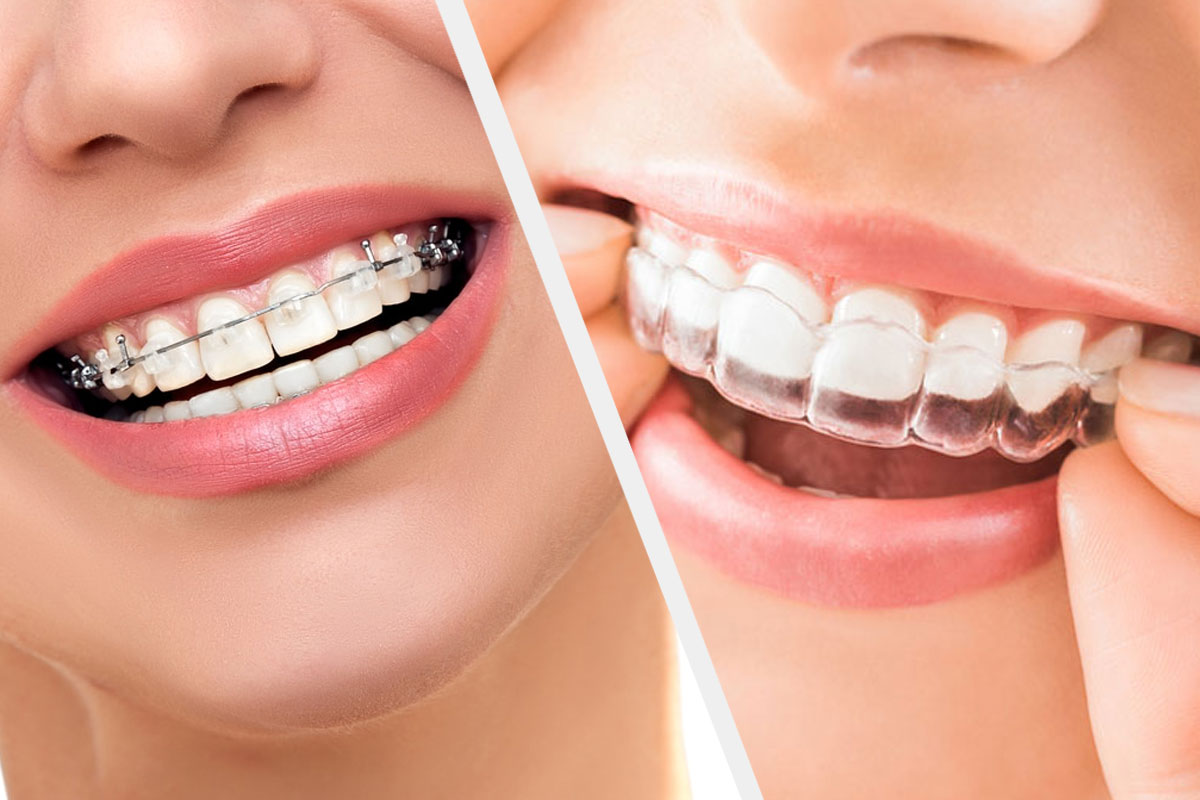Braces and clear aligners is a popular teeth straightening solution among people with crooked or misaligned teeth.
Pros of Braces:
- Braces are the most effective way to correct and prevent misalignment of teeth.
- They can fix various dental issues, including overcrowding, gaps between the teeth, overbites, underbites, and crossbites.
- Patients experience more control and predictability with braces regarding the results they can expect.
- Braces are adjustable, which allows for greater precision in treating more severe cases of misalignment.
Cons of Braces:
- Treatment time is typically longer than clear aligners, as they need to be adjusted every few weeks until the desired results are achieved.
- Braces can cause discomfort and pain for the patient due to tightness.
- Brushing and flossing with braces can be difficult, as food is more likely to get stuck in them.
- Patients need to take extra care regarding their diet, as certain foods, such as sticky candy and hard nuts, can cause damage to the brackets.
Pros of Clear Aligners:
- Treatment time is typically shorter than braces, with most cases taking just a few months to complete.
- Clear aligners are removable, allowing the patient to take them out when they need to while still maintaining progress.
- Since they’re nearly invisible, clear aligners offer a more discreet option for patients who don’t want their braces to be obvious.
- Clear aligners are more comfortable than braces as no metal is in the mouth.
- There is no need to change your brushing and flossing habits with clear aligners.
Cons of Clear Aligners:
- In some cases, clear aligners may not be effective for more severe dental problems.
- The cost of clear aligners can be higher than braces due to their bespoke nature.
- Patients need to be more diligent about wearing alignment devices for a minimum of 22 hours daily for the treatment to be successful.
- Clear aligners can become warped if not stored properly, which can cause them to become ineffective.
- Clear aligners are less effective if patients don’t adhere to their treatment plan.
Overall, braces and clear aligners have pros and cons, so it’s important to consult your dentist about which is the best option for you. However, with proper care and maintenance, either treatment can achieve a straighter smile.
What are Braces and Clear Aligners, and How Do They Work?
In the field of orthodontics, braces are a common form of treatment that uses metal brackets and wires to correct misalignment in the teeth. A wire connects the brackets attached to each tooth, tightened periodically over time to slowly move the teeth into their desired position. Braces can treat crowded, crooked, or gapped teeth, overbites, and underbites.
An alternative to traditional metal braces, clear aligners are made of transparent plastic and gradually shift teeth into place. For optimal results, the trays should be worn continuously for at least 22 hours per day, with follow-up appointments scheduled at regular intervals.
Clear aligners are often used to treat mild to moderate misalignment in the teeth and can address issues such as crowding, gaps between the teeth, or an overbite.
Both braces and clear aligners can achieve a straighter smile if used correctly and properly maintained. In any case, a trip to the dentist is a must about which treatment is the best for you.
Monahan Family & Cosmetic Dentistry has experience with both braces and clear aligners, so you can trust that you’re in good hands. Our experienced professionals will assess your condition and advise the best option for achieving a straighter smile. We’re here to help you make the best decision for yourself and ensure you get the results you desire.
Contact us today to learn more about braces and clear aligners.
